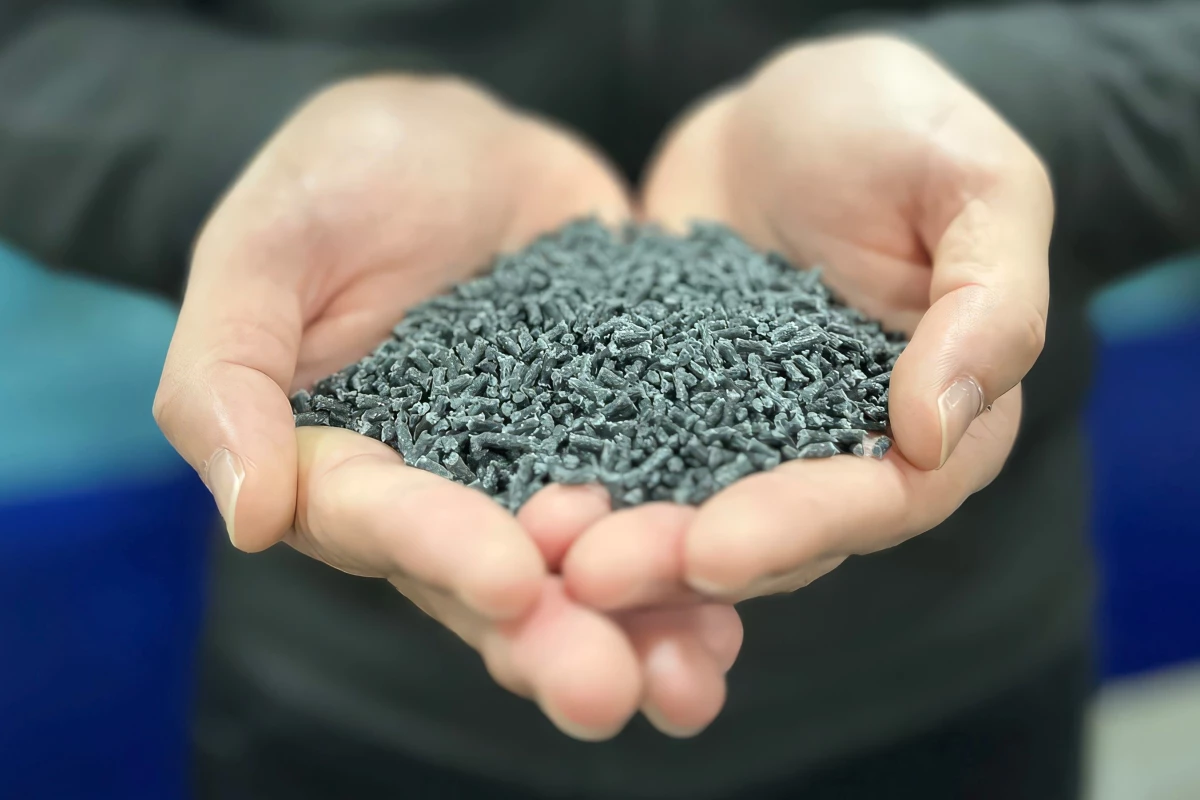Science
New Graphene-Infused Plastic Promises Stronger, Lighter Auto Parts

A groundbreaking innovation in automotive materials has emerged, with the introduction of a new substance called Gratek. This graphene-boosted plastic enhances the strength of glass-filled polypropylene by 20% while reducing its weight by 18%. Developed through a collaboration between the University of Toronto and Axiom Group, this material could significantly impact the automotive industry.
Graphene, often referred to as a “wonder material,” consists of one-atom-thick sheets of carbon atoms arranged in a honeycomb structure. It is celebrated not only for being the strongest human-made material but also for its flexibility, stretchability, and exceptional thermal and electrical conductivity. These unique properties prompted Nello David Sansone, a post-doctoral researcher at the University of Toronto’s Multifunctional Composites Manufacturing Laboratory, to explore ways to integrate graphene nanoplatelets into existing automotive plastics.
Sansone’s research focused on overcoming challenges faced by previous attempts to incorporate graphene into automotive components. In earlier efforts, graphene tended to cluster during processing, concentrating mechanical stress in specific areas and leading to material failure. He successfully developed a proprietary technique that allows the nanoplatelets to bond exclusively to the glass fibers within the polypropylene matrix. This innovative approach not only prevents clumping but also reduces the number of glass fibers required, resulting in Gratek’s enhanced strength and lighter weight.
Despite being composed of less than 1% graphene, Gratek offers notable advantages. One significant benefit is its reduced wear and tear on cutting and drilling machines due to the decreased glass content. However, the material’s reliance on graphene does limit its color to black, which presents some design challenges for manufacturers.
To address these limitations, Sansone also created Clatek, a material that replaces graphene nanoplatelets with clay-based halloysite nanotubes. Clatek reportedly delivers similar performance to Gratek while being white in color, allowing for easier dyeing and painting options. Gratek is anticipated to be contracted by a major automobile manufacturer before the end of 2023, while Clatek is expected to be commercially available within two years.
Reflecting on the potential applications of his work, Sansone stated, “It has shown real potential to make vehicles lighter, safer, and more sustainable.” He is also focused on another advanced material formulation, AegisX, developed through his start-up NanoMorphix. This new project aims to create transparent and textile armor for military, defense, aerospace, and personal protection sectors.
Recently, Sansone received recognition from Mitacs, a non-profit organization aimed at promoting technical innovation in Canada. His achievements highlight a path of significant advancements, similar to past Mitacs awardees who have developed groundbreaking technologies across various fields.
As the automotive industry continues to seek ways to enhance vehicle efficiency and safety, innovations like Gratek and Clatek represent promising steps forward, potentially reshaping material use in vehicles for years to come.
-

 Lifestyle4 months ago
Lifestyle4 months agoLibraries Challenge Rising E-Book Costs Amid Growing Demand
-

 Sports4 months ago
Sports4 months agoTyreek Hill Responds to Tua Tagovailoa’s Comments on Team Dynamics
-

 Sports4 months ago
Sports4 months agoLiverpool Secures Agreement to Sign Young Striker Will Wright
-

 Lifestyle4 months ago
Lifestyle4 months agoSave Your Split Tomatoes: Expert Tips for Gardeners
-

 Lifestyle4 months ago
Lifestyle4 months agoPrincess Beatrice’s Daughter Athena Joins Siblings at London Parade
-

 World4 months ago
World4 months agoWinter Storms Lash New South Wales with Snow, Flood Risks
-

 Science3 months ago
Science3 months agoSan Francisco Hosts Unique Contest to Identify “Performative Males”
-

 Science4 months ago
Science4 months agoTrump Administration Moves to Repeal Key Climate Regulation
-

 Business4 months ago
Business4 months agoSoFi Technologies Shares Slip 2% Following Insider Stock Sale
-

 Science4 months ago
Science4 months agoNew Tool Reveals Link Between Horse Coat Condition and Parasites
-

 Sports4 months ago
Sports4 months agoElon Musk Sculpture Travels From Utah to Yosemite National Park
-

 Science4 months ago
Science4 months agoNew Study Confirms Humans Transported Stonehenge Bluestones








